Lidocaine (Lignocaine)
Uses
Lidocaine Uses Lidocaine is used for local anesthesia, arrhythmia, hemorrhoids, and mouth ulcers.
How it Works
How Lidocaine Works Lidocaine is a local anesthetic. It functions by blocking the transmission of pain signals from the nerves to the brain, which helps to reduce the sensation of pain.
Side Effects
Common side effects of Lidocaine include allergic reactions and application site reactions such as burning, irritation, itching, and redness.
Expert Advice
- Lidocaine is prescribed to relieve itching and pain caused by:
- Scrapes
- Burns
- Rashes
- Bites
- Eczema
- Apply it over the affected area with a clean fingertip, three to four times a day or as directed by your doctor.
- Do not apply it to:
- Broken or infected areas of skin
- Face
- Eyes
- Eyelids
- Do not cover the treated area with airtight dressings, such as bandages, unless directed by a doctor, as this may increase the risk of side effects.
- Avoid contact with:
- Eyes
- Mouth
- Nose
- In case of accidental contact, rinse thoroughly with water.
- Consult your doctor if your skin condition has not improved after 2-4 weeks of treatment.
- Inform your doctor if you are:
- Pregnant
- Planning pregnancy
- Breastfeeding
Other Combinations
Adrenaline + Lidocaine (Lignocaine)
Adrenaline + Lidocaine (Lignocaine) + Methylparaben
Beclometasone + Clotrimazole + Lidocaine (Lignocaine) + Ofloxacin
Cetrimide + Choline Salicylate + Lidocaine (Lignocaine) + Tannic Acid
Betamethasone + Chloramphenicol + Lidocaine (Lignocaine)
Betamethasone + Clotrimazole + Gentamicin + Lidocaine (Lignocaine)
Chlorbutol + Lidocaine (Lignocaine) + Paradichlorobenzene + Turpentine Oil
Choline Salicylate + Lidocaine (Lignocaine)
Clotrimazole + Lidocaine (Lignocaine)
Baclofen + Gabapentin + Lidocaine (Lignocaine)
Gabapentin + Lidocaine (Lignocaine)
Calcium Dobesilate + Hydrocortisone + Lidocaine (Lignocaine) + Phenylephrine + Troxerutin + Zinc (Elemental Zinc)
Calcium Dobesilate + Hydrocortisone + Lidocaine (Lignocaine) + Zinc (Elemental Zinc)
Chlorhexidine Gluconate + Lidocaine (Lignocaine) + Metronidazole
Allantoin + Calcium Dobesilate + Hydrocortisone + Lidocaine (Lignocaine)
Allantoin + Hydrocortisone + Lidocaine (Lignocaine) + Zinc (Elemental Zinc)
Adrenaline + Lidocaine (Lignocaine) + Methylparaben + Sodium Chloride + Sodium Metabisulphite
Lidocaine (Lignocaine) + Tannic Acid
Acetic acid + Beclometasone + Clotrimazole + Lidocaine (Lignocaine) + Ofloxacin
Beclometasone + Chloramphenicol + Clotrimazole + Gentamicin + Lidocaine (Lignocaine)
Beclometasone + Chloramphenicol + Clotrimazole + Lidocaine (Lignocaine)
Beclometasone + Clotrimazole + Gentamicin + Lidocaine (Lignocaine)
Beclometasone + Clotrimazole + Lidocaine (Lignocaine) + Neomycin
Beclometasone + Lidocaine (Lignocaine) + Phenylephrine
Benzoxonium Chloride + Lidocaine (Lignocaine)
Diltiazem + Lidocaine (Lignocaine)
Euphorbia Prostrata Extract + Lidocaine (Lignocaine)
Lidocaine (Lignocaine) + Metronidazole + Sucralfate
Lidocaine (Lignocaine) + Nifedipine
Lidocaine (Lignocaine) + Phenazone
Lidocaine (Lignocaine) + Prilocaine
Lidocaine (Lignocaine) + Sucralfate
Lidocaine (Lignocaine) + Tannic Acid + Zinc (Elemental Zinc)
Lidocaine (Lignocaine) + Tetracaine
Lanolin + Lidocaine (Lignocaine) + Menthol + Thymol
Benzyl Alcohol + Diclofenac + Lidocaine (Lignocaine) + Linseed Oil + Menthol + Methyl Salicylate + Tramadol
Diclofenac + Lidocaine (Lignocaine) + Linseed Oil + Menthol + Mephenesin + Methyl Salicylate
Related Medications
Lidocaine (Lignocaine) 2% w/v

₹13.8
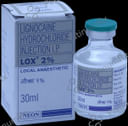
₹27.5
MRP ₹32.8
Lidocaine (Lignocaine) 350mg
₹1,125

₹209.3
MRP ₹255.2
Lidocaine (Lignocaine) 10% w/v

₹101.5
MRP ₹178
Lidocaine (Lignocaine) 5% w/w

₹47.9
MRP ₹57.7
Lidocaine (Lignocaine) 4% + Sucralfate 7%

₹116.3
MRP ₹141.8
Lidocaine (Lignocaine) 20mg
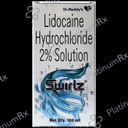
₹113.1
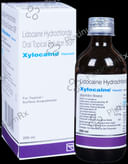
₹155.6
MRP ₹189.7
Lidocaine (Lignocaine) 20mg

₹155.6
MRP ₹189.7
Adrenaline 0.005mg + Lidocaine (Lignocaine) 2%

₹28.9
MRP ₹33.6
Lidocaine (Lignocaine) 2% w/v

₹34.6

₹24.3
MRP ₹34.7
Lidocaine (Lignocaine) 350mg

₹209.3
MRP ₹255.2
Lidocaine (Lignocaine) 700mg

₹804
Lidocaine (Lignocaine) 21.3mg
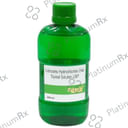
₹106
Lidocaine (Lignocaine) 21.3mg

₹220
Lidocaine (Lignocaine) 21.3mg

₹44.4
Lidocaine (Lignocaine) 21.33mg

₹36.9
Lidocaine (Lignocaine) 1%
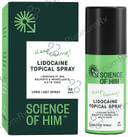
₹419
Lidocaine (Lignocaine) 2%

₹22.5
Lidocaine (Lignocaine) 21.3mg

₹240
Lidocaine (Lignocaine) 25mg

₹30
Lidocaine (Lignocaine) 5%

₹30
Lidocaine (Lignocaine) 21.3mg
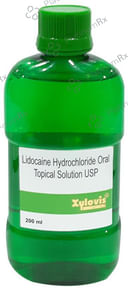
₹200
Lidocaine (Lignocaine) 21.3mg
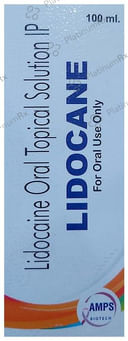
₹385
Lidocaine (Lignocaine) 20mg

₹28
Lidocaine (Lignocaine) 21.3mg

₹34.7
Lidocaine (Lignocaine) 21.3mg
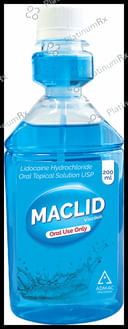
₹219